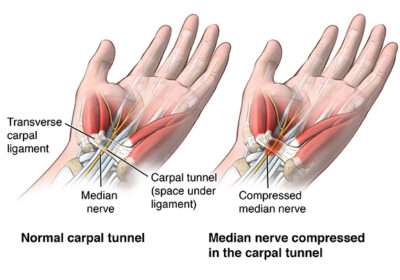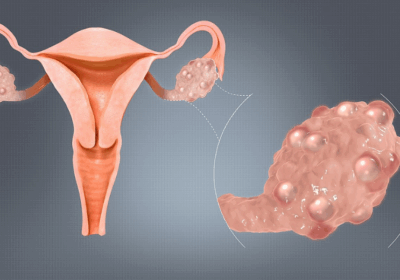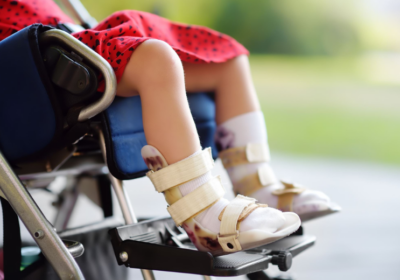AYURVEDIC APPROACH TO PAIN RELIEF AND ENERGY RESTORATION IN FIBROMYALGIA
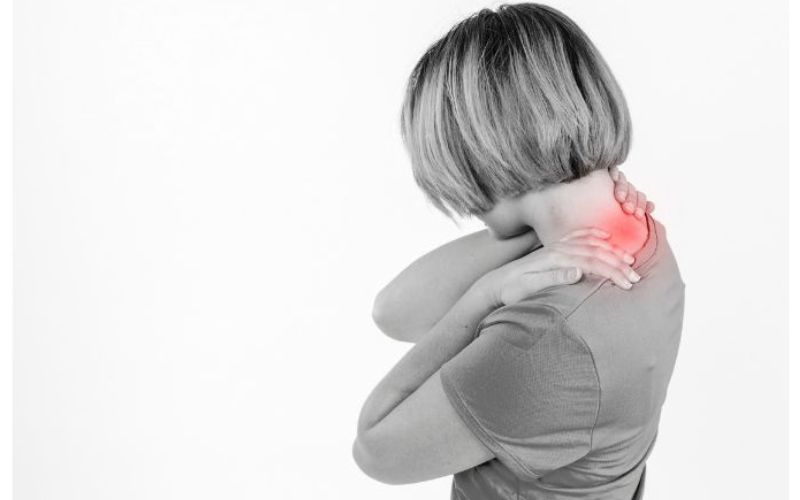
Fibromyalgia is a chronic pain condition that causes widespread muscle and joint pain, fatigue, and sleep disturbances.
It is not a joint or muscle disease, but rather a pain regulation disorder — where the brain and spinal cord overreact to pain signals, making even mild sensations feel painful.
People with fibromyalgia often describe their body as painful, heavy, or bruised all over — even light touch or mild activity can cause discomfort. This occurs due to central sensitisation, which means the nervous system becomes overly sensitive to normal sensations.
Fibromyalgia is much more common in women between the ages of 20 and 55, but it can also affect men and even children. Genetics, infections, trauma, and emotional stress are common triggers.
Ayurvedic View of Fibromyalgia
In Ayurveda, Fibromyalgia is understood as a disorder of Mamsa Dhatu Vata Vyadhi or Agnimandya with Ama Sanchaya.
It occurs when Vata Dosha (responsible for movement, nerve impulses, and circulation) becomes aggravated and Ama (toxins from poor digestion) accumulates in the body.
The combined effect leads to blockage of Srotas (body channels), disturbed Prana (vital energy) flow, and nutritional depletion of tissues, resulting in pain, stiffness, fatigue, and mental dullness — the hallmark signs of Fibromyalgia.
Key Ayurvedic Factors Involved
1. Agnimandya (Weak Digestive Fire)
-
Improper digestion leads to the formation of Ama (toxins).
-
These toxins circulate in the body and lodge in muscles and joints.
-
Symptoms: bloating, heaviness, loss of appetite, lethargy.
2. Ama Sanchaya (Toxin Accumulation)
-
Ama combines with Vata and Kapha, obstructing energy flow in channels.
-
This leads to poor nourishment of tissues and accumulation of stiffness.
-
Symptoms: body ache, fatigue, brain fog, dull pain.
3. Vata Prakopa (Aggravation of Vata)
-
Vitiated Vata causes irregular nerve impulses and erratic pain movement.
-
Pain often shifts from one part of the body to another.
-
Triggers: stress, cold weather, lack of rest.
4. Kapha Dushti (Imbalance of Kapha)
-
Imbalanced Kapha causes heaviness, sluggishness, and depression.
-
The body feels tired and heavy even with minimal exertion.
5. Sroto Avarodha (Blockage of Body Channels)
-
Obstruction in the Srotas prevents the proper flow of Prana and nutrients.
-
Muscles and joints become stiff, leading to chronic pain and fatigue.
Symptoms Explained in Ayurvedic Terms
-
Mamsa Shoola (Muscle Pain): Continuous dull or shifting pain due to trapped Vata.
-
Stambha (Stiffness): Restricted movement from Ama and Kapha obstruction.
-
Gourava (Heaviness): Feeling of heaviness or sluggishness throughout the body.
-
Alasya (Lethargy): Lack of energy or motivation due to blocked energy channels.
-
Mano Gourava (Mental Cloudiness): Difficulty concentrating, forgetfulness, or “fibro fog.”
-
Nidra Vikara (Sleep Disturbance): Unrefreshing or disturbed sleep caused by aggravated Vata.
Causative Factors in Ayurveda
Common causes that contribute to Vata aggravation and Ama accumulation include:
-
Irregular eating habits or overeating heavy, oily, or cold foods
-
Poor digestion and sluggish metabolism
-
Excessive physical or mental exertion
-
Emotional stress, anxiety, or suppression of emotions
-
Exposure to cold or damp climates
-
Inadequate rest and irregular sleep patterns
Causes of Fibromyalgia
Fibromyalgia does not have a single cause.
It develops due to a combination of physical, emotional, and environmental factors that affect the body’s pain regulation system.
1. Central Sensitisation
In fibromyalgia, the nervous system becomes hypersensitive.
Normal sensations — like touch, pressure, or movement — are interpreted as pain.
This phenomenon, known as central sensitisation, explains why pain persists even without visible inflammation.
2. Neurochemical Imbalance
Changes in brain chemicals play a major role:
-
Low serotonin and dopamine (affect mood and pain regulation)
-
High substance P (increases pain transmission)
These imbalances raise pain perception and contribute to fatigue, anxiety, and sleep disturbance.
3. Infections or Physical Trauma
Some patients develop fibromyalgia after viral or bacterial infections, or following injury or surgery.
These stressors can “trigger” the brain’s pain centres to remain overactive even after recovery.
4. Emotional and Mental Stress
Long-term emotional strain, grief, anxiety, or trauma can disrupt the body’s stress response (HPA axis) — leading to hormonal imbalance, sleep loss, and chronic pain.
5. Sedentary Lifestyle and Poor Sleep
Lack of physical activity, irregular sleep, and excessive screen time lower muscle tone and disrupt energy flow, worsening fibromyalgia symptoms.
6. Genetic Factors
Fibromyalgia sometimes runs in families.
Certain genes related to pain sensitivity and neurotransmitter regulation make individuals more prone to developing the condition.
Symptoms of Fibromyalgia
Fibromyalgia symptoms vary from person to person and often come and go.
They may worsen with stress, cold weather, or lack of rest.
1. Widespread Pain
-
Persistent pain in muscles, joints, and soft tissues
-
Pain may shift from one area to another.
-
Described as dull, aching, burning, or throbbing
2. Fatigue and Low Energy
-
Feeling tired even after a long sleep
-
Exhaustion after mild physical or mental activity
3. Sleep Disturbance
-
Difficulty falling or staying asleep
-
Light, unrefreshing sleep
-
Morning stiffness and body heaviness
4. Cognitive Symptoms (“Fibro Fog”)
-
Poor memory and concentration
-
Slow mental processing
-
Confusion or forgetfulness
5. Emotional and Psychological Symptoms
-
Anxiety, depression, or irritability
-
Mood swings and loss of motivation
6. Digestive and Other Physical Symptoms
-
Irritable bowel syndrome (IBS), acidity, or bloating
-
Headaches or migraines
-
Tingling or numbness in the hands and feet
-
Palpitations or shortness of breath
-
Increased sensitivity to cold, light, or sound
Diagnosis of Fibromyalgia
1. Clinical Evaluation
Fibromyalgia is diagnosed clinically, meaning there are no specific blood or imaging tests that can confirm it.
Doctors should suspect fibromyalgia in patients who have:
-
Widespread muscle and joint pain
-
Fatigue and unrefreshing sleep
-
Cognitive issues (“fibro fog”)
-
Mood disturbances such as anxiety or depression
-
Other somatic complaints, like headaches or irritable bowel syndrome
A thorough medical history and physical examination are essential. The doctor will assess:
-
Nature and distribution of pain
-
Sleep pattern and fatigue severity
-
Cognitive and emotional symptoms
-
Any signs of other diseases, like arthritis or thyroid disorders
2. Physical Examination
During examination, the clinician will:
-
Palpate (press) different soft tissue sites and joints
-
Note tenderness in muscles without swelling or inflammation.
-
Evaluate neurological function
Earlier, doctors used to count the number of tender points (1990 ACR criteria), but now diagnosis focuses on generalised or multisite pain rather than a fixed number of tender points.
3. Laboratory and Imaging Tests
No test can confirm fibromyalgia. These investigations are mainly done to rule out other causes:
Commonly done tests:
-
Complete Blood Count (CBC)
-
ESR or C-reactive protein (CRP)
-
Thyroid Stimulating Hormone (TSH)
-
Vitamin D, Vitamin B12, and magnesium levels (if needed)
Tests like rheumatoid factor (RF) or ANA are done only if there’s a strong suspicion of autoimmune disease.
Patients with poor sleep or snoring may need a sleep study to check for sleep apnea.
Diagnostic Criteria for Fibromyalgia
A. Yunis and Masi Criteria
All 4 major + at least 3 minor criteria must be met.
Major Criteria:
-
Generalised musculoskeletal pain at 3 or more sites for ≥ 3 months
-
No underlying cause identified
-
Normal test results
-
At least 5 tender points on soft tissue
Minor Criteria:
-
Anxiety or tension
-
Sleep problems
-
Chronic headaches
-
Fatigue
-
Irritable bowel syndrome
-
Numbness or tingling
-
Subjective soft tissue swelling
-
Pain worsened by activity, weather, or stress
B. 2010 ACR (American College of Rheumatology) Criteria
Diagnosis is made if:
-
Widespread Pain Index (WPI) ≥ 7 and Symptom Severity (SS) score ≥ 5
OR
WPI 3–6 and SS score ≥ 9 -
Symptoms persist for ≥ 3 months.
-
No other disease explains the pain.
The WPI records painful body areas (out of 19), and the SS score assesses fatigue, sleep, and cognitive issues.
C. 2016 ACR Revised Criteria
Fibromyalgia is diagnosed if:
-
WPI ≥ 7 and SS ≥ 5, or WPI 4–6 and SS ≥ 9
-
Pain present in at least 4 of 5 body regions
-
Symptoms continue for 3 months or more
This version avoids confusion with localized pain syndromes.
D. AAPT (ACTTION–APS–Pain Taxonomy) Criteria (2019)
Developed jointly by the FDA and American Pain Society.
Core Diagnostic Features:
-
Pain in 6 or more of 9 possible body sites (e.g., head, arms, legs, spine, chest, abdomen)
-
Moderate-to-severe sleep problems or fatigue
-
Symptoms lasting ≥ 3 months
Even if the patient has another pain condition, fibromyalgia can still be diagnosed if these criteria are met.
Treatment Of Fibromyalgia At Maurya Ayurveda
We integrate Ayurvedic therapies, physiotherapy, yoga, and acupuncture to relieve pain, restore energy, and improve overall well-being for fibromyalgia patients.
Ayurveda Treatment For Fibromyalgia
1. Podi Kizhi(Choorna Pinda Swedam)
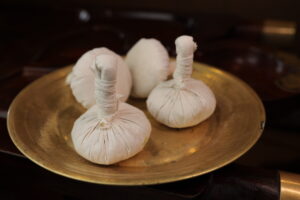
Podi Kizhi is a traditional Ayurvedic sudation therapy (Swedana) involving the application of heated herbal powders tied in a cloth pouch (Kizhi). The warm poultices are applied over the body using rhythmic tapping and circular motions, inducing therapeutic sweating and muscle relaxation.
At Maurya Ayurveda, Kolakulathadi Choornam is commonly used for preparing the Kizhi. The procedure is performed for about 30–45 minutes.
Benefits of Podi Kizhi in Fibromyalgia
-
Relieves muscle stiffness and fatigue
-
Reduces pain and tenderness
-
Improves circulation and lymphatic drainage
-
Promotes lightness, flexibility, and energy
-
Helps balance Vata–Kapha doshas and eliminate Ama (toxins)
2. Dhara

Dhara is a classical Ayurvedic therapy in which a steady stream of warm medicated liquid—such as herbal decoction, fermented liquid, milk, buttermilk, or medicated oil—is poured continuously over a specific body part or the entire body from a defined height.
In Fibromyalgia, Dhara helps to calm aggravated Vata dosha, reduce muscle pain and inflammation, and soothe the nervous system. The warmth and rhythmic flow induce deep relaxation, relieve fatigue, and enhance sleep quality.
Dhanyamla Dhara
Dhanyamla Dhara is a specialized form of Dhara using a warm, fermented herbal liquid called Dhanyamla, prepared from cereals (Dhanya), citrus fruits, and horse gram (Kulatha).
Procedure:
-
The warm Dhanyamla is poured rhythmically over the affected region or the entire body for 30–45 minutes.
-
The gentle warmth and continuous flow help to loosen tight muscles, reduce stiffness, and enhance local circulation.
Benefits of Dhanyamla Dhara in Fibromyalgia
-
Alleviates generalized muscle pain and tenderness
-
Reduces stiffness, inflammation, and fatigue
-
Improves circulation and tissue oxygenation
-
Calms the nervous system, promoting better sleep and stress relief
-
Balances Vata and Kapha doshas, restoring vitality and energy
3. Lepam
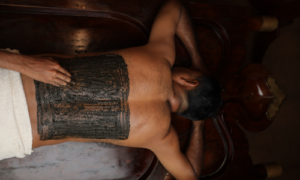
Lepam is a traditional external Ayurvedic therapy in which a warm medicated herbal paste is applied over the affected or painful areas.
At Maurya Ayurveda, herbal powders such as Grahadoomadi Choornam or Rasnadi Choornam are used. The paste is gently warmed and applied in a thick layer, retained for 30–60 minutes, and then removed using warm water once it dries.
Benefits of Lepam in Fibromyalgia
-
Provides local anti-inflammatory and analgesic effect
-
Reduces muscle tenderness and localized swelling
-
Improves microcirculation and relaxes tight fascia
-
Pacifies Vata–Pitta dosha, reducing burning or throbbing pain
4. Nadi Swedam (Local Steam)
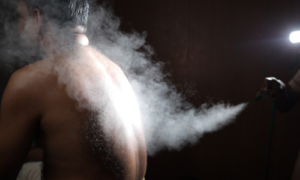
Nadi Swedam is a localized steam therapy where medicated steam is directed through a tube (nadi) onto painful areas.
At Maurya Ayurveda, Dashamoola Kashayam is used to generate the steam, and the therapy typically lasts 10–20 minutes.
Benefits of Nadi Swedam in Fibromyalgia
-
Reduces localized stiffness, pain, and muscle spasm
-
Improves blood and lymphatic circulation
-
Enhances tissue oxygenation and metabolic activity
-
Facilitates Ama (toxin) clearance from deeper tissues
Role of Physiotherapy in Fibromyalgia
Physiotherapy aims to reduce pain and fatigue, enhance mobility, and restore normal function through a combination of graded exercise, manual therapy, electrotherapy, and postural training.
Core and Strengthening Exercises
1. Aerobic Exercise
Techniques:
Gentle, low-impact exercises such as walking and stationary cycling are introduced gradually to improve endurance and blood circulation. Intensity is kept low to avoid post-exertional fatigue.
Benefits:
-
Improves stamina and cardiovascular health
-
Reduces muscle stiffness and fatigue
-
Enhances mood through endorphin release
2. Stretching Exercises

Techniques:
Gentle, sustained stretches for major muscle groups (neck, back, shoulders, hips, and legs) are performed to maintain elasticity and prevent stiffness.
Benefits:
-
Relieves muscle tension and soreness
-
Improves flexibility and posture
-
Reduces joint stiffness and enhances mobility
3. Strengthening Exercises
Techniques:
Low-resistance, high-repetition strengthening exercises target weak muscles, especially around the spine, hips, and shoulders, to improve body support and posture.
Benefits:
-
Builds muscular endurance and tone
-
Reduces strain on painful areas
-
Enhances overall strength and stability
4. Core Stabilization Exercises
Techniques:
Focus on deep abdominal and spinal muscles using controlled movements that support spinal alignment and balance.
Benefits:
-
Improves trunk control and posture
-
Reduces spinal stress and fatigue
-
Enhances coordination and body stability
Flexibility and Mobility Exercises
5. Spinal Mobility and Range-of-Motion Exercises
Techniques:
Gentle spinal movements such as pelvic tilts and trunk rotations are performed to maintain flexibility and ease movement in daily activities.
Benefits:
-
Increases spinal flexibility
-
Relieves stiffness and tightness
-
Improves fluid body movements
Manual Therapy Techniques
6. Soft Tissue Mobilisation
Techniques:
The physiotherapist applies slow, deep pressure to tight muscles using myofascial release and trigger-point therapy to relieve tension and enhance blood flow.
Benefits:
-
Reduces pain and muscle spasm
-
Improves tissue flexibility and relaxation
-
Enhances nutrient supply to soft tissues
7. Gentle Joint Mobilisation
Techniques:
Low-grade (Grade I–II) Maitland joint mobilisations are used to restore normal joint play and reduce stiffness in affected regions.
Benefits:
-
Improves joint flexibility and alignment
-
Reduces discomfort during movement
-
Restores functional mobility
Electrotherapy and Heat Modalities
8. TENS (Transcutaneous Electrical Nerve Stimulation)
Techniques:
Small electrodes are placed on painful areas, delivering mild electrical impulses to block pain signals and stimulate endorphins.
Benefits:
-
Provides safe, non-invasive pain relief
-
Decreases muscle tenderness
-
Improves overall comfort and relaxation
9. Ultrasound Therapy
Techniques:
A conductive gel is applied to the skin, and a therapeutic ultrasound probe is moved over tender points to deliver deep tissue heating.
Benefits:
-
Promotes deep muscle relaxation
-
Improves tissue healing and circulation
-
Reduces inflammation and soreness
10. Heat Therapy
Techniques:
Application of warm, moist heat packs on tender muscle areas helps relax tissues before exercise.
Benefits:
-
Increases blood circulation
-
Reduces stiffness and muscle tightness
-
Enhances flexibility and readiness for movement
Postural and Ergonomic Training
11. Postural Correction
Techniques:
Training focuses on maintaining a neutral spine while sitting, standing, or performing daily tasks. Ergonomic education includes adjusting workstation height and proper body alignment.
Benefits:
-
Reduces muscle fatigue and tension
-
Prevents overuse and postural strain
-
Promotes balanced movement patterns
12. Energy Conservation and Pacing
Techniques:
Physiotherapists guide patients to balance activity and rest, avoid overexertion, and plan tasks strategically throughout the day.
Benefits:
-
Prevents flare-ups and exhaustion
-
Improves daily function with less fatigue
-
Enhances long-term activity tolerance
13. Patient Education and Self-Management
Techniques:
Education helps patients understand fibromyalgia as a chronic but manageable condition. It focuses on:
-
Regular graded physical activity and pacing of daily tasks
-
Maintaining sleep hygiene
-
Using stress management techniques such as relaxation, breathing, or yoga
Benefits:
-
Empowers patients to manage symptoms effectively
-
Reduces anxiety and fear of movement (Kinesiophobia)
-
Promotes better adherence to physiotherapy and exercise programs
-
Encourages long-term independence and confidence in recovery
Acupuncture in Fibromyalgia
Techniques:
-
Fine, sterile needles are inserted into specific acupuncture points associated with pain modulation, relaxation, and energy balance.
-
Commonly used points include:
-
LI4 (Hegu) – relieves generalized pain and muscle tension.
-
GB20 (Fengchi) – reduces neck, shoulder, and headache-related pain.
-
ST36 (Zusanli) – improves energy, reduces fatigue, and enhances immunity.
-
SP6 (Sanyinjiao) – calms the mind and promotes restful sleep.
-
LV3 (Taichong) – reduces stress, irritability, and muscle stiffness.
-
BL23 & BL25 (Back Shu points) – relieve lower back pain and enhance vitality.
-
Benefits:
-
Relieves widespread pain and muscle stiffness.
-
Improves blood circulation and nerve recovery.
-
Reduces fatigue, anxiety, and sleep disturbances.
-
Balances energy flow and promotes relaxation.
-
Supports the body’s natural pain control mechanisms through endorphin release.
Yoga Therapy in Fibromyalgia
Techniques:
Yoga combines gentle Asanas (postures), Pranayama (breathing control), and meditation, offering a holistic approach to fibromyalgia care.
Movements are soft, slow, and mindful to prevent overexertion while enhancing flexibility and mental calmness.
Recommended Asanas:
-
Tadasana (Mountain Pose) : Improves posture, balance, and spinal alignment.
-
Balasana (Child’s Pose) : Relieves tension in the back, shoulders, and hips.
-
Marjarasana–Bitilasana (Cat–Cow Stretch) : Enhances spinal flexibility and reduces stiffness.
-
Setu Bandhasana (Bridge Pose) : Strengthens back and gluteal muscles while calming the nervous system.
-
Supta Matsyendrasana (Supine Spinal Twist) : Relaxes the spine and aids digestion.
-
Shavasana (Corpse Pose): Deep relaxation pose to reduce fatigue and promote mental clarity.
Pranayama and Meditation Techniques:
-
Nadi Shodhana (Alternate Nostril Breathing): Balances both brain hemispheres and reduces anxiety.
-
Bhramari Pranayama (Humming Bee Breath): Calms the nervous system and improves focus.
-
Deep Diaphragmatic Breathing: Enhances oxygenation and reduces muscle tension.
-
Mindfulness Meditation: Promotes awareness and decreases pain perception.
Benefits:
-
Reduces muscle tension, pain, and stiffness.
-
Enhances flexibility, posture, and joint mobility.
-
Improves sleep quality and reduces fatigue.
-
Calms the mind, reduces anxiety, and boosts mood.
-
Improves oxygen flow, energy balance, and relaxation response.
-
Supports hormonal balance and immune function through stress reduction.
Ayurvedic Diet and Lifestyle in Fibromyalgia
The Ayurvedic approach focuses on restoring Agni, pacifying Vata, and detoxifying Ama through proper diet, lifestyle, and internal therapies.
Ayurvedic Dietary Guidelines for Fibromyalgia
1. Vata-Pacifying and Ama-Reducing Diet
A Vata-calming and toxin-reducing diet helps relieve pain, improve energy, and support digestion.
Recommended Foods:
-
Warm, freshly cooked, and easily digestible meals
-
Soups, khichdi, moong dal, red rice, and steamed vegetables
-
Healthy fats like ghee and sesame oil for tissue nourishment
-
Spices such as ginger, turmeric, cumin, coriander, ajwain, and black pepper to improve digestion
-
Warm water or herbal teas (ginger, tulsi, cinnamon) throughout the day
Foods to Avoid:
-
Cold, dry, stale, or reheated food
-
Fried and processed items
-
Excessive curd, red meat, sugar, or refined flour
-
Cold beverages and carbonated drinks
2. Enhancing Agni (Digestive Fire)
A stable Agni prevents Ama formation and supports better metabolism, clarity, and immunity.
How to Strengthen Agni:
-
Begin the day with warm water with ginger or lemon
-
Use Agni-Deepaka spices: ginger, black pepper, cumin, turmeric, and ajwain
-
Eat at fixed times and only when hungry — avoid fasting or overeating
-
Prefer warm, light meals and avoid mixing incompatible foods
-
Take Trikatu Churna or Hingvastaka Churna under Ayurvedic supervision if digestion is weak
Lifestyle Recommendations for Fibromyalgia Management
1. Daily Routine (Dinacharya)
A stable and nourishing routine helps pacify Vata and maintain energy levels.
-
Maintain regular meal and sleep timings
-
Avoid skipping meals or staying up late
-
Prioritize rest and balanced activity
2. Exercise and Yoga
Gentle physical activity supports flexibility, reduces stiffness, and promotes relaxation.
-
Yoga Asanas
-
Pranayama
-
Avoid overexertion or high-intensity workouts
3. Stress and Sleep Management
-
Practice meditation, mindfulness, and deep breathing to reduce anxiety
-
Ensure adequate, restful sleep in a calm environment.
-
Avoid stimulants like caffeine or screen exposure before bedtime
At Maurya Ayurveda, our holistic program combines Ayurveda, physiotherapy, yoga, and acupuncture to address pain at its root, restore energy, and help you reclaim your quality of life.
DISCLAIMER: The information provided in this article is intended solely for educational purposes. Treatment decisions should be made exclusively by a well-qualified Ayurvedic physician. Self-medication is strongly discouraged.
Maurya Ayurveda Hospital, opposite to Sabine Hospital, Pezhakkapilly P.O, Muvattupuzha, Ernakulam; PIN:686673, Contact no:9947183000
Email: info@mauryaayurveda.com
Maurya Ayurveda Ortho & Neuro Rehabilitation Centre ( Ayurveda Hospital )


